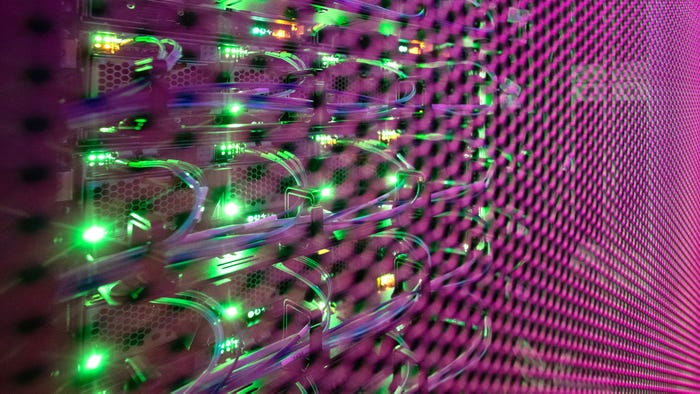Buzzwords Will Kill the Internet
Sharif Fotouh, the founder and CEO of Compass-owned edge data center builder EdgePoint Systems, will be talking about why certain buzzwords make him squeamish.
March 12, 2018

When Sharif Fotouh hears the terms “IoT” or “virtual reality” he winces a little. Not because he doesn’t love new technologies like these – he is one of tech’s most ardent advocates – but because he’s worried that the Internet as we know it may not be able to support them.
The founder and CEO of edge-based data center builder EdgePoint Systems, recently acquired by Compass, will be talking about why such buzzwords make him squeamish in his session at Data Center World 2018 on March 15. He is worth listening to, given that he was one of the people responsible for pushing gigabit fiber into tens of thousands of homes in the US.
Fotouh has first-hand experience of life at the edge of the network. After working at Data Foundry, a colocation operator in Texas, he moved to Google in 2013. There, he worked on the search giant’s now-frozen Fiber project, which rolled out gigabit fiber service to thousands of households around the US before expansion halted in 2016.
“What was eye-opening for me on that project was getting to see a national network build up,” he said. His team was responsible for building out local infrastructure across multiple cities including ‘Google Huts’, which were 20-30-foot prefab cabins filled with fiber equipment to serve around 20,000 homes.
“I had this light-bulb moment where I realized that a lot of good co-location sites are collected in just a handful of cities around this country,” he says.
“Finding colos that had enough capacity and infrastructure to support redundant power and cooling for what were pretty moderate footprints was honestly an uphill battle once you left the main tier one markets and a handful of the top tier two markets,” he recalls “Everything below that was barren.”
Stormy Weather Ahead
At the same time, he recognized that an increasingly large proportion of Internet traffic was video, and saw a potential problem emerging.
For the most part, video from large players like Netflix needn’t leave the local cache in a data center. “When we look at how much data traverses the Internet, really 65-70% of it doesn’t leave the city,” he says.
Relying on high-speed connections in centrally-located data centers might serve the Internet’s need just fine for now, but as our usage of the network evolves he sees stormy weather ahead.
“When you start looking at applications that might not be that far out, you realize that not only will that box no longer serve the need, but the data center that box is in will no longer serve the need. The fiber long-haul will no longer serve that need. The whole Internet is about to get shaken up.”
What kind of applications might test the network? He believes that the Internet’s traffic flows mostly one way. Infrastructure supports data getting from the supplier to the consumer, but doesn’t account for a coming uptick in real-time, low latency user-generated data, he says. What happens when a constellation of increasingly smart IoT sensors begin sending audio and video back up the pipe?
He experienced this recently when he tried to install his third Nest security camera and saw the upload bandwidth on his relatively high-spec broadband account choke.
“They were saturating my upload, but I could stream Netflix on ten devices at once according to my provider,” he says. “I checked my provider's website. They didn't even list upload speed.”
This focus on new services without acknowledging their effect on traffic patterns and infrastructure is what irks Fotouh about the torrent of buzzwords flooding the tech industry. IoT, cloud-based AI, VR and AR are appealing technologies, but the question he asks is this: How well will our current infrastructure support them?
“I don’t expect people to walk out of my speech and say that they have to build data centers in Oklahoma City and Columbus ASAP,” he says. “But data center people need to be investigating these technologies and understanding what implications they have on the fundamental assumptions and architectures that we’ve been building on.”
If a handful of people walk out of the room with that thought in their minds, then Fotouh will be a happy man. He sees it as the first step in a long journey.
Review the complete Data Center World program agenda for a list of all sessions and networking events.
About the Author
You May Also Like






